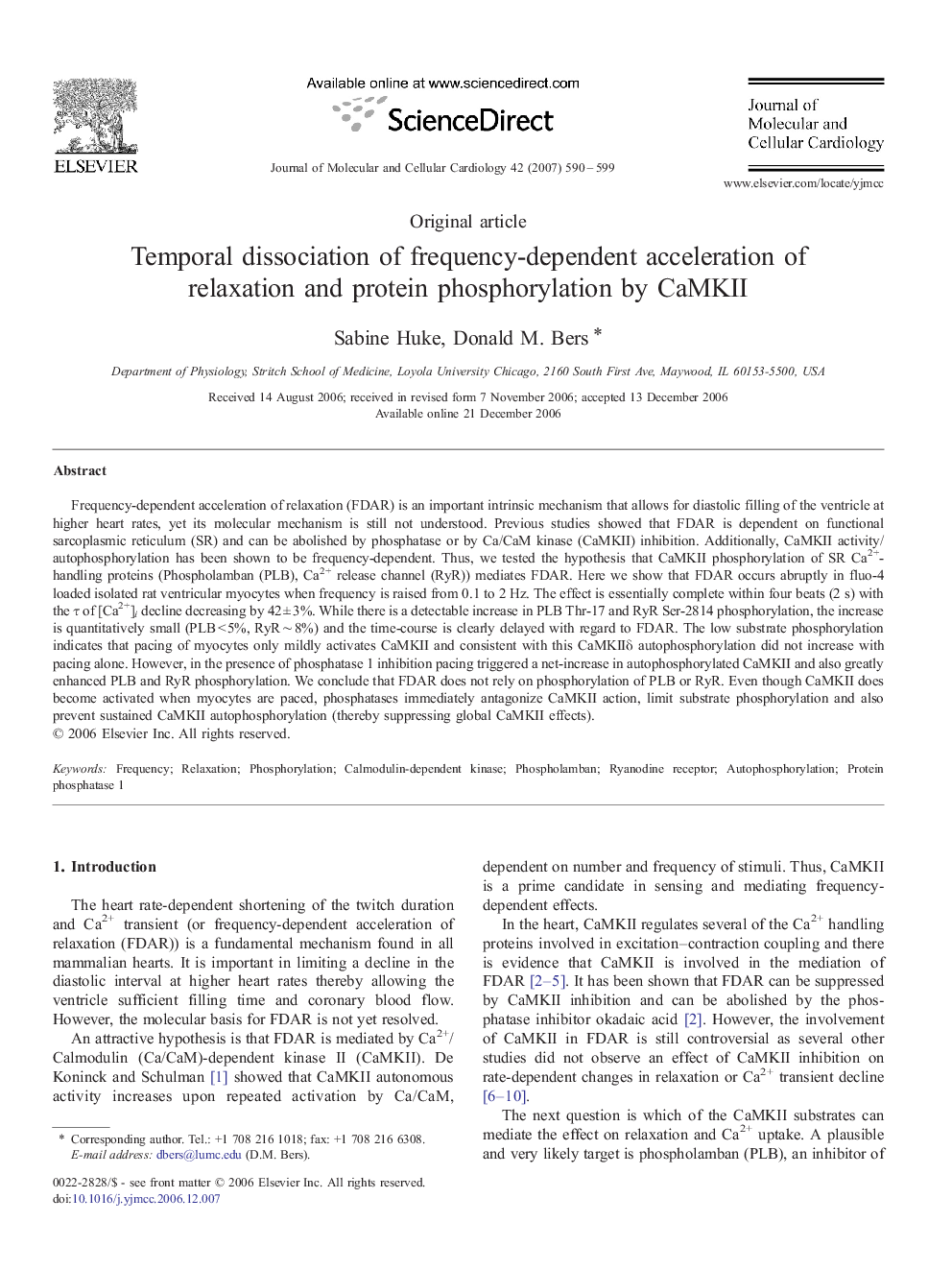| کد مقاله | کد نشریه | سال انتشار | مقاله انگلیسی | نسخه تمام متن |
|---|---|---|---|---|
| 2192130 | 1097882 | 2007 | 10 صفحه PDF | دانلود رایگان |

Frequency-dependent acceleration of relaxation (FDAR) is an important intrinsic mechanism that allows for diastolic filling of the ventricle at higher heart rates, yet its molecular mechanism is still not understood. Previous studies showed that FDAR is dependent on functional sarcoplasmic reticulum (SR) and can be abolished by phosphatase or by Ca/CaM kinase (CaMKII) inhibition. Additionally, CaMKII activity/autophosphorylation has been shown to be frequency-dependent. Thus, we tested the hypothesis that CaMKII phosphorylation of SR Ca2+-handling proteins (Phospholamban (PLB), Ca2+ release channel (RyR)) mediates FDAR. Here we show that FDAR occurs abruptly in fluo-4 loaded isolated rat ventricular myocytes when frequency is raised from 0.1 to 2 Hz. The effect is essentially complete within four beats (2 s) with the τ of [Ca2+]i decline decreasing by 42 ± 3%. While there is a detectable increase in PLB Thr-17 and RyR Ser-2814 phosphorylation, the increase is quantitatively small (PLB < 5%, RyR ∼ 8%) and the time-course is clearly delayed with regard to FDAR. The low substrate phosphorylation indicates that pacing of myocytes only mildly activates CaMKII and consistent with this CaMKIIδ autophosphorylation did not increase with pacing alone. However, in the presence of phosphatase 1 inhibition pacing triggered a net-increase in autophosphorylated CaMKII and also greatly enhanced PLB and RyR phosphorylation. We conclude that FDAR does not rely on phosphorylation of PLB or RyR. Even though CaMKII does become activated when myocytes are paced, phosphatases immediately antagonize CaMKII action, limit substrate phosphorylation and also prevent sustained CaMKII autophosphorylation (thereby suppressing global CaMKII effects).
Journal: Journal of Molecular and Cellular Cardiology - Volume 42, Issue 3, March 2007, Pages 590–599